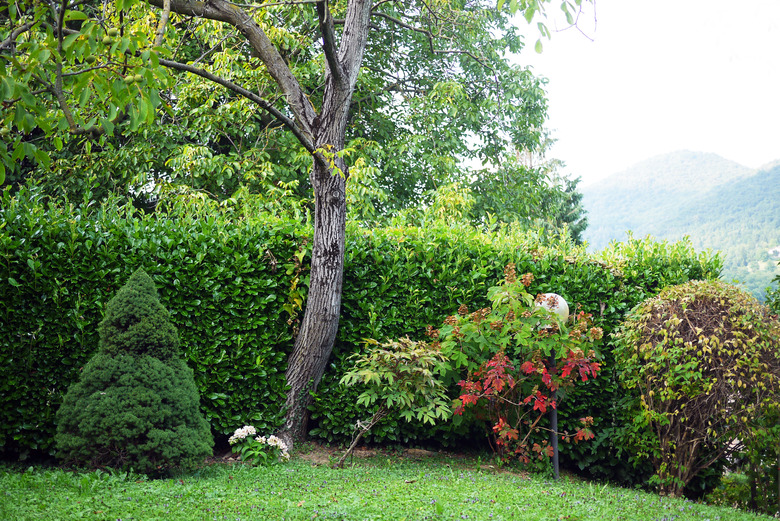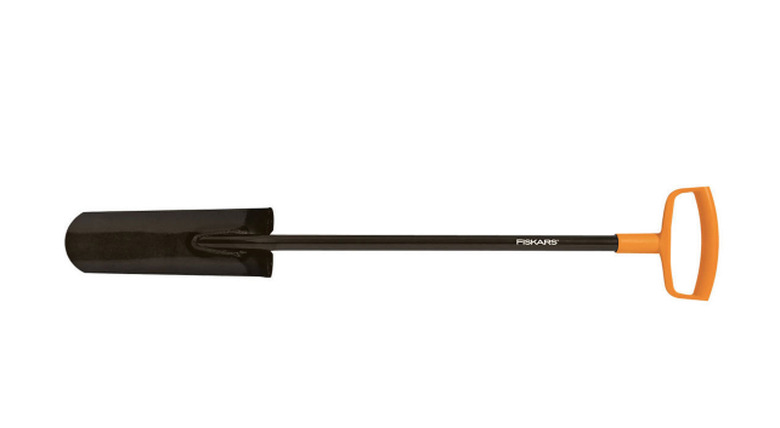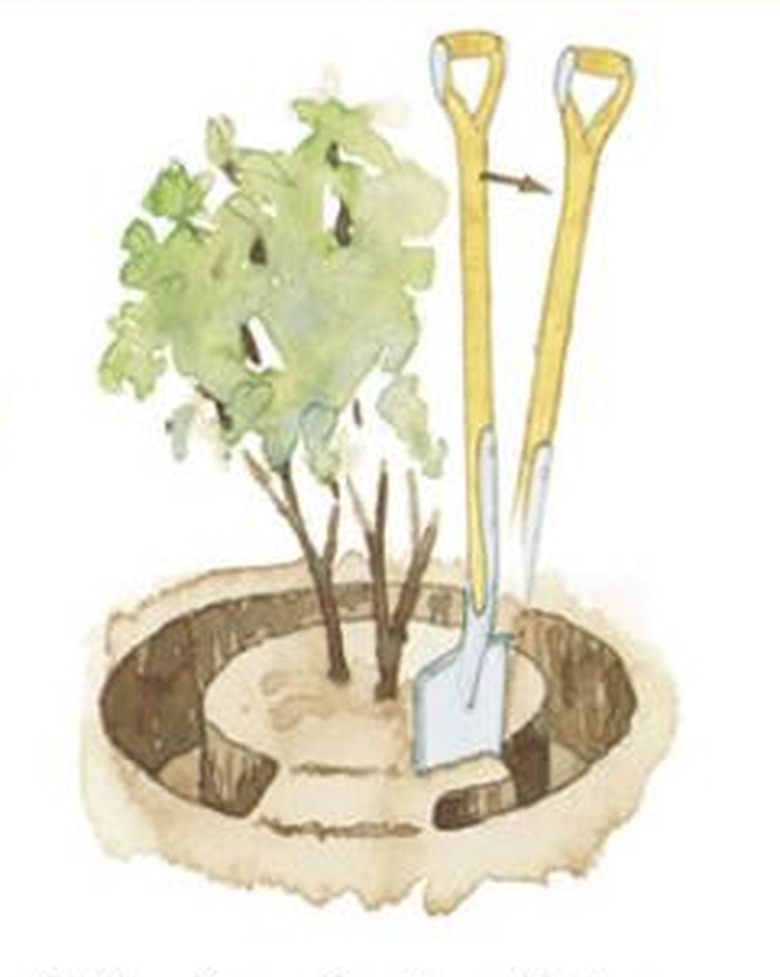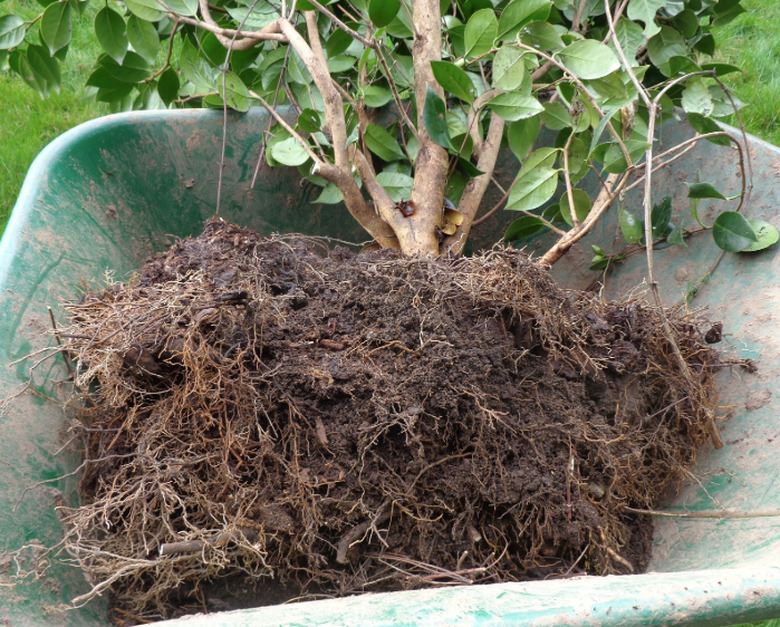How To Transplant A Shrub
Do you have a shrub that doesn't seem to be thriving where it's planted, and you think it might do better someplace with different conditions? Or is your flower garden crowding out one of your bushes? Maybe you just don't like the placement of the plant and want to move it elsewhere. Here's how to transplant a shrub.
First, Tips for Ensuring Success
First, Tips for Ensuring Success
Digging up a shrub damages its roots and shocks the plant. It's therefore best to transplant in conditions and at a time that will stress it the least.
- Most bushes fare better if they are transplanted in spring or early summer when the plant is dormant, new growth has hardened off, and there are no light-green leaves on it.
- It's better to transplant when temperatures are cooler, rather than hot, and to shade the shrub during the process, if possible.
- Before transplanting, make sure the new site you plan to put the bush meets optimal conditions for the plant: light, exposure, soil pH, and drainage.
- Smaller shrubs transplant more successfully than older, larger ones.
- Deciduous plants transplant better than evergreens.
- You'll need to dig up a root ball roughly two-thirds the diameter of the spread of the shrub. For a bush 24 inches tall, for example, dig a root ball 16 inches in diameter.
Prepare Ahead of Time
Prepare Ahead of Time
You will improve your chances for successful transplanting with proper pruning of branches and roots, beginning about six months before you plan to move the shrub.
References
Branch Pruning
Six months before transplanting, prune the foliage, trimming away the outermost ends of the main branches to the point where side branches grow. This reduces the amount of foliage the plant will send nutrients to later, when you transplant it so that it can expend more energy on developing roots.
Root Pruning
The roots of shrubs grow mostly in the top 8 inches of soil and spread out in a diameter about 1.5 times the spread of the bush. At the ends of those are feeder roots or root hairs, which absorb nutrients and moisture. Unless you stimulate the growth of a large number of feeder roots near the trunk or stem before transplanting, you'll remove most of the feeder roots when you dig up the root ball, leaving the shrub with only the thick, old roots that have a limited absorption capacity. To produce feeder roots near the stem and retain more roots when you dig it up, root-prune the shrub three to six months before transplanting it.
There are two methods, depending on the plant's age. For newer shrubs, use a technique called spading; it involves cutting the roots by thrusting a shovel into the ground in a circle roughly 6 inches inside the root ball that you'll eventually dig out. For plants that have been in the site for several years or more, use a method called trenching. Here, you dig a trench 8 to 12 inches wide and 12 inches deep around the plant, with the outer edge of the trench along the line of the eventual root ball. Fill the trench with a mixture of two parts of topsoil to one part compost. After root pruning, check the base of the shrub frequently to make sure the soil remains moist until you transplant.
Note that transplanting can affect the flowering of the shrub the following year. Although the shrub may have fewer buds and berries, it should return to normal the year after that.
Things Needed
-
Garden hose for watering
-
Spray paint in a color that shows on green grass
-
Tape measure
-
Approximately 10 feet of cord or lightweight rope
-
Shovel
-
Transplanting spade
-
Tarp (optional)
1. Prepare the Shrub
Minimizing stress on your shrub involves making sure it is well hydrated, and that branches won't be damaged during moving.
- Two days before transplanting, water the base of the shrub deeply and thoroughly to ensure the soil stays on the roots once you dig. Make sure that the soil is moist down to 6 inches of depth.
- On moving day, tie up the bottom branches of the shrub up so they'll stay out of the way while you dig and move it. Do you recall how a Christmas tree's branches are wrapped, facing upward, with cord when you buy it? Do something similar, without wrapping your shrub like a mummy.
2. Dig the Receiving Hole
To ensure that the shrub's root ball doesn't get left exposed for too long and dry out, begin by digging the receiving hole.
- Mark the placement of the hole by spray-painting a circle on the grass that is twice the planned diameter of the root ball.
- Shovel the hole 9 or 10 inches deep; you may adjust the depth later if necessary, but replanting a shrub deeper than its original depth was will actually harm it. Make sure the sides of the receiving hole are straight; they should not slope inward.
- Water the hole; otherwise the surrounding soil will later suck water away from the root ball of the shrub.
3. Trench around the Shrub
Careful digging is essential for the coming move of your shrub.
- In the soil beneath the shrub, use the shovel to trace a circle 14 to 16 inches in diameter. You want to dig wide and deep to get as much of the roots as possible, because the more roots you have, the greater the likelihood of success.
- Dig along this line as deeply as you can, with your shovel facing outward, away from the shrub. Shoveling outward cuts the roots; if you shovel inward toward the bush, you'll lift and break the roots, which stresses the plant far more.
4. Remove the Shrub
After you've dug the trench, you'll work with the transplanting shovel to actually remove the shrub from its current home.
- With the transplanting shovel facing toward the shrub and at a sharp angle beneath the plant, drive the shovel as deep as possible into the trench line, about 8 to 15 inches. Do this around the entire trench. You're not removing dirt—the idea is to cut the roots and unmoor the shrub from the ground.
- Gently push the shrub over, removing the entire root ball from the ground. Do not shake off any soil—although doing so would make the shrub lighter to move, it will harm the root system.
- Put the shrub in a wheelbarrow. Or, if the shrub and its root ball are so large that you won't be able to carry the shrub, instead place a tarp beneath the shrub to drag it to its new location.
5. Move the Shrub to the New Hole
Work quickly when moving your shrub to its new home. The less time the roots spend exposed to the air, the less likely they are to dry out.
- Measure the height of the root ball. If it's more than 9 or 10 inches in height, adjust the depth of the receiving hole to match. Then, carry or drag the shrub to the receiving hole (you may need some help from someone else) and center it in the cavity.
- Shovel in soil to fill the receiving hole and cover the root ball. Don't add amendments or fertilizer to the soil. Tamp the dirt firmly, but not hard, because doing so could break the roots.
- If desired, apply a layer of mulch 3 to 4 inches deep, keeping it off the stem.
- Immediately water the shrub thoroughly at the roots.
- Water daily for a week, keeping the soil moist but not wet, then every other day for the rest of the summer months.
- For the first year in its new location, avoid pruning except to remove broken branches, and don't fertilize the shrub.



